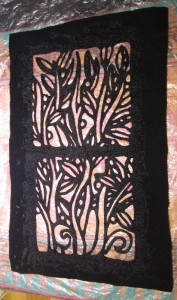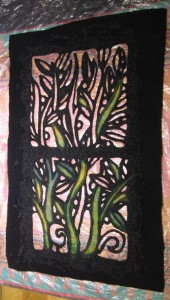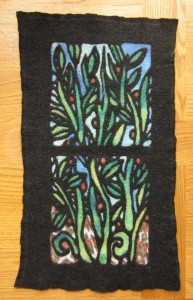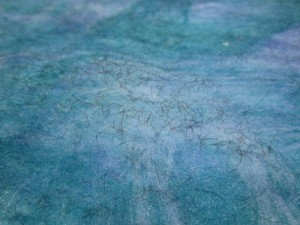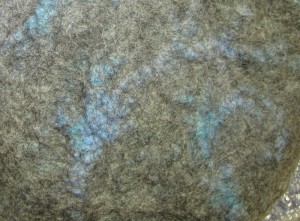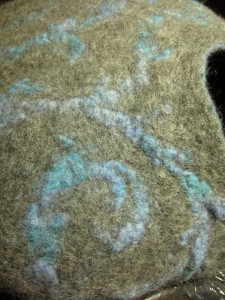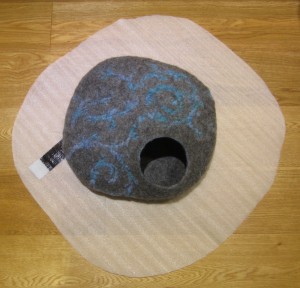The lovely Ruth Lane from the Felting and Fiber Studio Forum is creating a book of contemporary designs and posted a request for interpretations of a couple of designs in different art forms, this is my interpretation of the Nature design in nuno felt.
I started by increasing the size of Ruth’s pdf on a photocopier to make it more manageable for felt and traced that design onto the dull side of some freezer paper. This was ironed onto a piece of black prefelt.
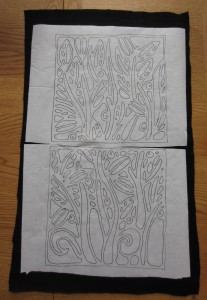
Then cut out the internal sections to leave a black felt frame. I wetted out the prefelt to help the silk pieces stay in place.
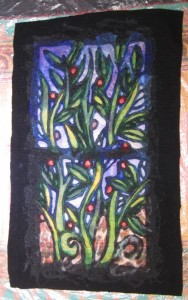
When I flipped it over the freezer paper was still attached to the front, this was very carefully removed so as not to pull the black prefelt out of position.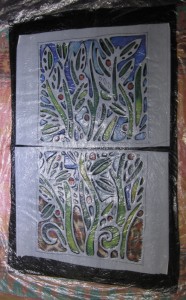
Then I gently rubbed the surface through some decorator’s plastic to fix the silk and wool into position before rolling it.
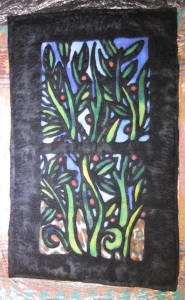
Take care to check the prefelt has not moved off the silks after every 100 rolls.
The finished wall hanging:

